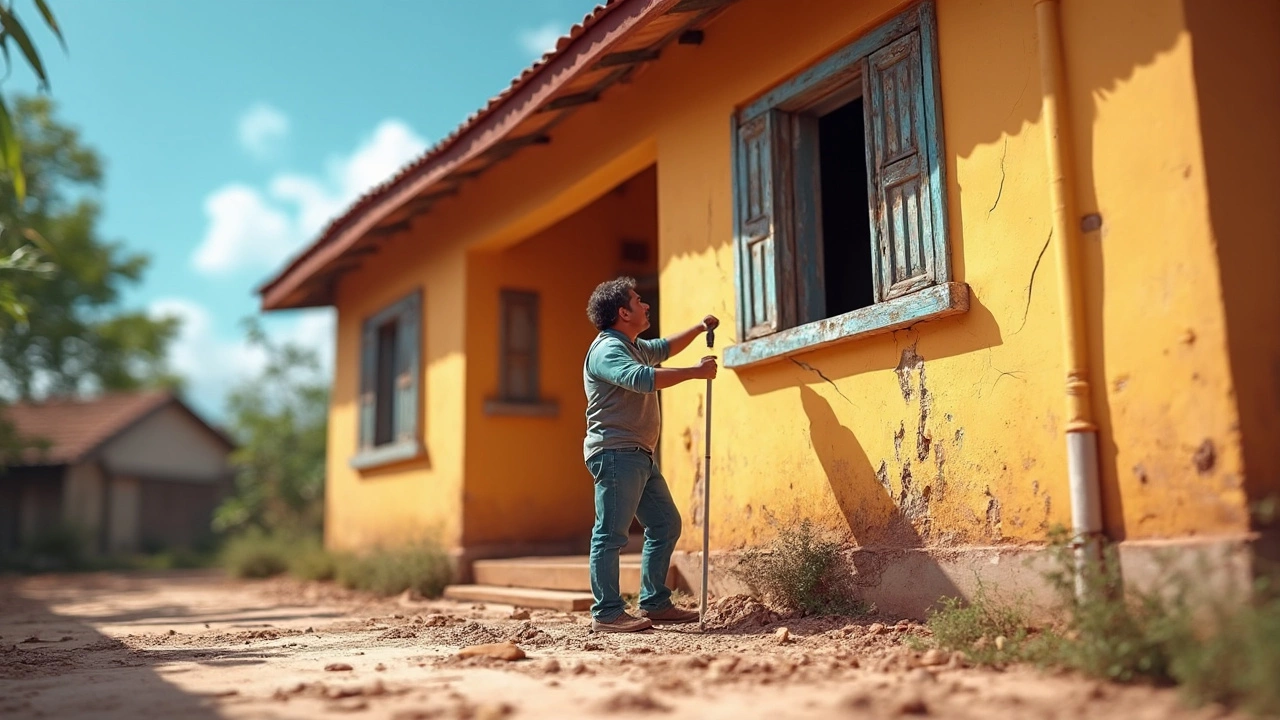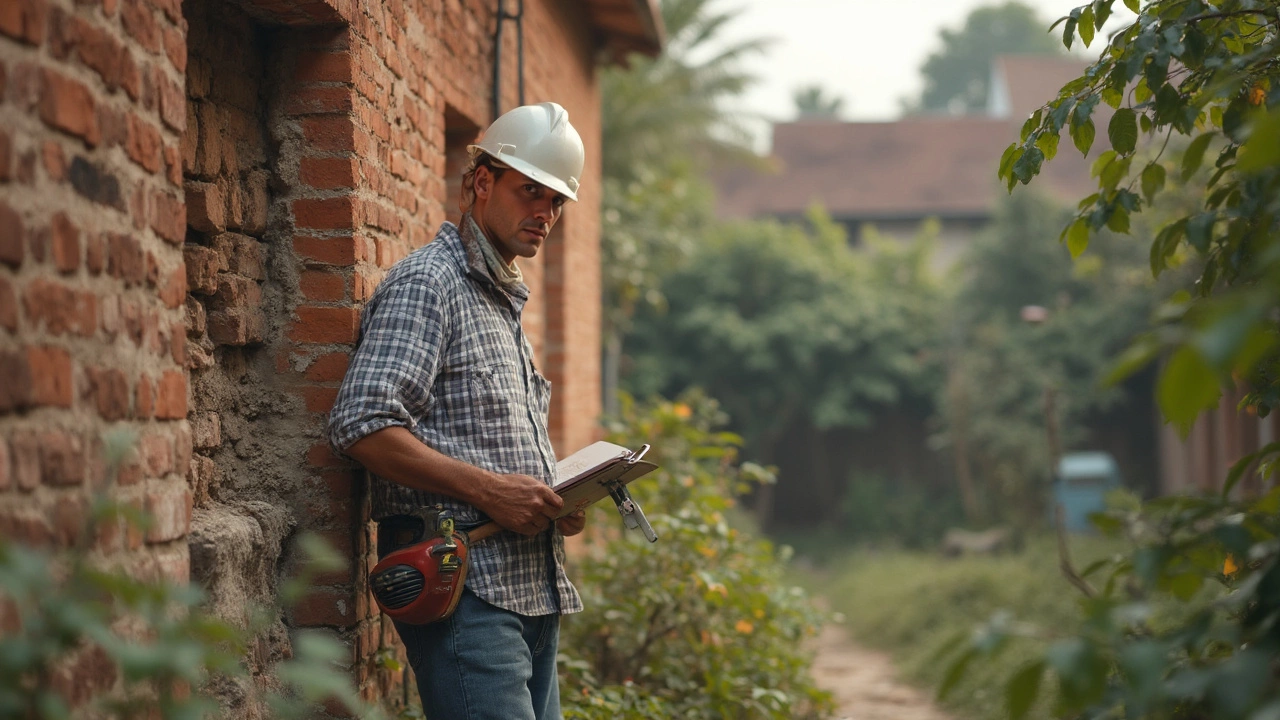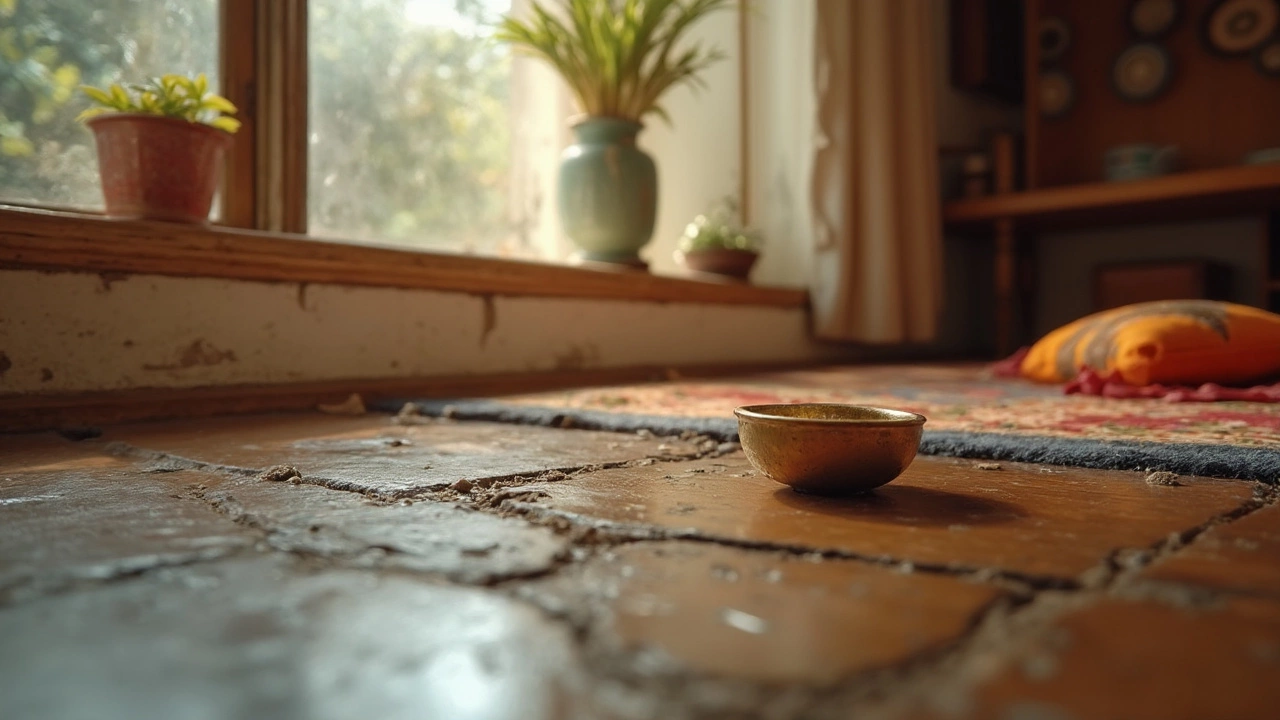When to Walk Away from Foundation Problems

Alright, let's talk about something most of us would rather ignore: foundation problems. They're like that mysterious clunking noise your car makes, only way more expensive. It's crucial to know when to tackle these issues and when it might be smarter to just walk away.
Foundation problems can sneak up on you. One day your doors don't close right, the next you're googling 'why is my house sinking'? But not every crack spells disaster, and not every problem needs a costly fix. You just need to know what signs to watch for and when those signs mean it's time to bring in the pros or, if it's really bad, consider other options.
- Identifying Warning Signs
- When to Get Professional Help
- Assessing Repair Costs and Risks
- Deciding When to Leave a Property
- Tips for Preventing Future Problems
Identifying Warning Signs
So, you’re suspicious that your home’s foundation is acting up. First things first, it's good to know what you're looking for. Knowing these warning signs can help you decide whether you're dealing with a small hiccup or a big deal needing urgent attention.
One of the most obvious signs is cracks. Hairline cracks are usually okay, but start worrying if they get wider than a quarter inch. It's a hint that something's shifting underneath. If you see cracks in brickwork or the basement floor, it might be time to dig deeper.
Next up, watch how your doors and windows behave. If they’re suddenly stubborn, sticking, or difficult to lock, you might blame it on foundation issues rather than the weather. Also, sloping floors and tilting walls aren't just spooky movie setups. They often tell us that the foundation might have things going on.
- Cracks wider than ¼ inch in walls or floors
- Doors and windows not shutting properly
- Floors that slope or walls that are uneven
Also, keep an ear out for creaking sounds when you're home alone. They might be charming in old movies, but in real life, they can suggest your house is moving in ways it shouldn’t. Other signs like gaps around windows, expansion joints separating, and nails popping out of walls can also point to foundation problems.
You’ve got to keep an eye on any mysterious water around your foundation. Water is sneaky and can worsen any existing issues, making it a frequent accomplice of foundation problems.
If it all feels a bit overwhelming, don’t worry. Spotting these signs early can save you a lot of cash and stress in the long run. Make sure you give these potential problems the attention they deserve!
When to Get Professional Help
So you've noticed some issues with your home's foundation. Maybe you've spotted cracks in the walls or doors that just won't shut properly. Before you start panicking, let's talk about when you really need to call in the experts.
First things first, not all foundation problems require immediate professional attention. But here’s the kicker: if you see cracks that are wider than a quarter of an inch, it's time to stop waving it off and pick up the phone. Other red flags include significant shifting or sloping floors and windows that don't open smoothly anymore. Problems like these signal deeper issues that need a professional eye.
Foundation repair isn't exactly DIY territory. If you suspect something's wrong, getting a structural engineer to assess the situation can save you a ton later on. These pros aren't just going to walk in, charge a fee, and tell you to cross your fingers. They'll provide detailed reports on what’s up and suggest fixes.
- Cracks in walls wider than a quarter-inch
- Sloping or uneven floors
- Persistent door and window sticking
Bottom line? If the foundation problems in your house seem more like 'uh-oh' than 'huh?', it's time to call in the experts. A quick check-up by someone who knows their stuff could potentially save your home from costly damages down the line.

Assessing Repair Costs and Risks
So, your home's got foundation problems. Now what? Before you start counting pennies, let's break down the costs and risks of fixing these issues. Repair jobs can range from minor tweaks to your budget busting wide open. Knowing what you're in for can help you make a smart decision.
First, consider the scope of the damage. Hairline cracks can sometimes be handled with a bit of DIY magic or a local handyman's touch, costing maybe a few hundred bucks. Yay for the small wins! But if the cracks are big enough to drive a mouse through or if your floors make you feel like you're on a ship at sea, it's probably time to shell out for a professional inspection.
- Small Cracks: These can often be repaired with epoxy or polyurethane injection, costing between $500 to $3,000.
- Moderate Settling: Foundation jacking or underpinning might set you back around $10,000 to $15,000.
- Major Shifts: Full foundation replacement could cost upwards of $30,000.
Here's where the risks come in. The longer you wait, the more it could cost you in the end. Ignoring serious signs could lead to structural damage, making repairs even pricier. Safety also becomes a concern—no one wants to live in a house that's one strong breeze away from becoming an exhibit of the leaning tower effect.
But wait, there's more! Let's talk hidden costs. Think landscaping, lost time, and maybe even temporary lodging if things get dicey. A solid inspection report will help you consider all these factors before you decide to fix or fly the coop.
Also, weigh out the impact on your home value. Sure, spending big on foundation repair might not make your home worth a fortune overnight. But leaving issues unchecked is like putting a foreclosure sign in your yard down the line.
Lastly, think about insurance. Most policies don’t cover standard foundation repair, so you'll likely be shouldering the costs. Before you take the hammer to the piggy bank, double-check if your situation’s an exception. Every penny counts, right?
Deciding When to Leave a Property
So, how do you know when it's time to say goodbye to a property with foundation problems? It might seem dramatic, but sticking around a sinking home can be more trouble than it's worth. Let's break down when walking away might be the best move.
First off, the cost of repair is a massive consideration. Foundation repair can be seriously pricey, sometimes reaching tens of thousands of dollars. If the repair estimate outweighs the value of the home, or if your budget just can’t handle it, that’s a pretty big red flag.
Then there are the problems that go beyond just money, like safety hazards. Cracks in the foundation can lead to water leakage, mold growth, or even structural collapse in severe cases. If these are present and widespread, the risk might simply be too high to justify staying.
Let's talk resale value. If you're thinking of selling, extensive foundation problems can make buyers wary, or force you to significantly drop the price. If market trends show low interest in homes needing heavy repairs, it might not be worth sticking it out.
There’s also the mental toll of dealing with constant repairs and unstable living conditions. If the stress becomes overwhelming, sometimes peace of mind is worth more than holding on to a problematic property.
And hey, don't forget about professional advice. Structural engineers and contractors provide assessments that could make your decision clearer. In about 30% of cases (according to home repair consultant John Smith & Associates), the recommendation might lean towards leaving if risks are high, but conditions of the market and personal circumstances greatly influence that decision.
Ultimately, walking away doesn't mean failure. It's about weighing the pros and cons and choosing what's best for your future, financially and emotionally. Not every property problem has to be your problem, after all.

Tips for Preventing Future Problems
Nobody wants to deal with foundation problems repeatedly, right? Let's chat about some proactive steps you can take to keep your home's foundation in solid shape. It's all about a little bit of attention now to save you from big headaches later.
First off, managing water around your house is crucial. Water is like the silent enemy of foundations. You want to make sure it's draining away from your home. Here’s what helps:
- Gutters and Downspouts: Keep them clean. Clogged gutters are no one's friend when it dumps all that water right next to your house.
- Proper Grading: Your yard should slope away from the foundation. If it's not, you might need to add some soil to create that slope.
- French Drains: If you're dealing with persistent drainage issues, installing a French drain might be a solid investment. It helps redirect water flow away from the home.
Trees and shrubs can be both decorative and destructive. Plant trees away from the house—those roots can wreak havoc underground without you knowing.
Keep an eye on moisture levels. In extremely dry conditions, the soil can shrink. During a drought, lightly water the soil around your foundation to keep things stable. But don’t overdo it; balance is key.
If you spot small cracks, don’t panic. Minor hairline fractures are common as concrete naturally expands and contracts. Just keep an eye on them to see if they grow. Applying a concrete patching compound to seal minor cracks can prevent water infiltration.
Last but not least, regular inspections can save you a bundle. Walk around your home a couple of times a year and pay attention to any new cracks, doors that don't shut properly, or sloping floors. If something feels off, it's better to call in a professional sooner than later.
Playing defense with your foundation is the best offense. Regular upkeep keeps small issues from turning into big, costly problems. Plus, it helps you avoid ever needing to walk away from your home.


